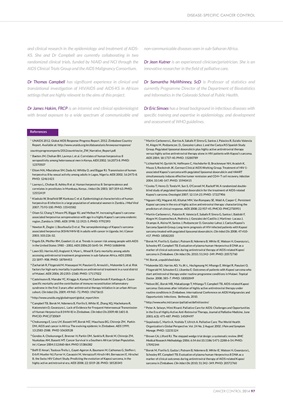
The World Health Organization (WHO) defines early
detection of cancer as encouraging people with the
first symptoms or signs of cancer to come to a health
care professional so their cancer can be diagnosed early
(early diagnosis) or testing (screening) people with no signs of
a common cancer (asymptomatic people) for an early cancer
or precancer.1 The rationale is that some early cancers or
precancers will be more curable and less likely to be fatal than
if diagnosed later when the cancer is at an advanced stage.2
Therefore in some high-income countries there are now
established population based "invitation to screening"
programmes for cervical, breast and colorectal (bowel)
cancer.
3-5 Opportunistic cancer screening has also been
practised in many countries for decades, but, with the
exception of cervical cancer screening, is generally of
unproven effectiveness.1-4
Therefore, since the 1980s randomized
controlled trials (RCTs), where participants
have been invited to screening, have been
used to evaluate whether screening for a
particular cancer is efficacious before
government-funded, population-based
"invitation to screening" programmes are
started; that is whether screening
significantly reduced mortality in the
people randomized to screening versus those who were not
(controls).3 However, cervical cancer screening was
introduced decades before RCTs were used to evaluate
whether cancer screening was efficacious and it has so far
proven, in practice, to be the most effective cancer screening
test.4,6 The current state of evidence for early detection
programmes for cancer is shown in Table 1.
2 Cancers that have
been tested in RCTs, which produced either positive or
negative evidence of efficacy, are shown. Cancers for which
early detection (early diagnosis and/or screening) in clinical
practice has been shown to reduce population mortality are
grouped as "Successful in practice". Those cancers for which
early detection has not been shown to reduce population
mortality are grouped as "Unsuccessful in practice". It is
important to note screening for liver and lung cancer have been
SHOULD MAMMOGRAPHIC
SCREENING BE INTRODUCED IN
LOW- AND MIDDLE-INCOME
COUNTRIES?
ROBERT BURTON (LEFT) AND ROBIN BELL (RIGHT), DEPARTMENT OF EPIDEMIOLOGY AND
PREVENTIVE MEDICINE AND WOMEN'S HEALTH RESEARCH PROGRAM, SCHOOL OF PUBLIC
HEALTH AND PREVENTIVE MEDICINE, MONASH UNIVERSITY, MELBOURNE, AUSTRALIA
Breast cancer is the commonest cancer of women. In high-income countries, the impact of adjuvant
treatment has caused the balance of benefits to harm of mammographic screening to be
questioned. In low- and middle-income countries, women being "breast aware" and having health
workers capable of skilled breast examination are the basis for clinical down-staging (early
diagnosis). However, there is an obligation to ensure that women so identified have access to
competent diagnosis and treatment.
DISEASE-SPECIFIC CANCER CONTROL
98 CANCER CONTROL 2014
Table 1: Implementation of early detection of cancers in populations for some common cancers
2
Successful RCT +/- Unsuccessful RCT +/in Practice
Meta-analysis in practice
Breast Positive Prostate Positive
Colorectal Positive Lung Positive
Cervix No/Positive* Liver Positive
Oral Positive** Ovary Negative
*Only for a once in a lifetime HPV cervical screening test with referral if positive and Visual Inspection
with Acetic Acid application (VIA) and immediate cryotherapy if positive.
7 8
**In smokers
9